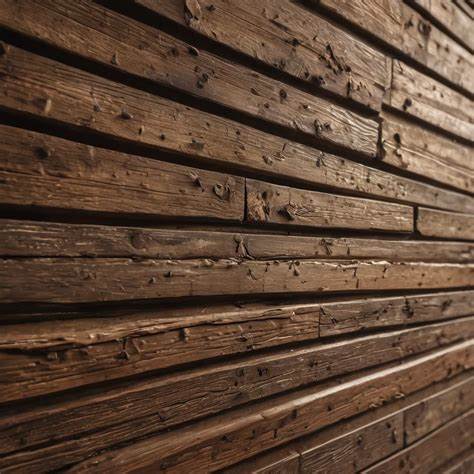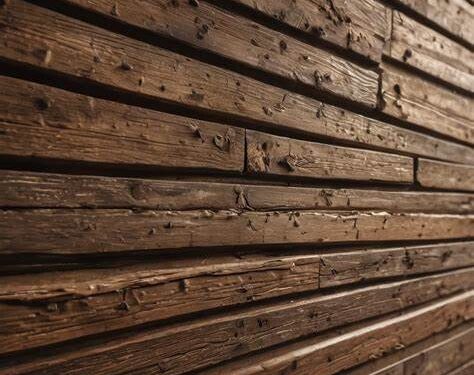
Embark on a journey through the world of replacement wood siding, where we delve into the various types, benefits, installation process, and maintenance tips. Get ready to discover the beauty and functionality of wood siding in this engaging exploration.
In this guide, we will cover everything you need to know about replacing wood siding, from the different options available to the steps involved in installation and upkeep.
Types of Replacement Wood Siding
When it comes to replacement wood siding, there are various types available in the market, each with its own unique characteristics and benefits. It's essential to understand the differences between these options to make an informed decision for your home.
Cedar Siding
Cedar siding is a popular choice known for its natural beauty and durability. It is resistant to rot, decay, and insects, making it a low-maintenance option for homeowners. However, cedar siding can be more expensive compared to other wood siding options.
Pine Siding
Pine siding is another common choice for wood siding replacement. It is more affordable than cedar and offers a warm, rustic look to the exterior of a home. However, pine siding is not as durable as cedar and may require more maintenance over time.
Redwood Siding
Redwood siding is prized for its rich color and natural resistance to decay and insects. It is a high-end option that provides excellent durability and requires minimal maintenance. Redwood siding is more costly than cedar or pine but offers exceptional longevity.
Engineered Wood Siding
Engineered wood siding is a composite material made from wood fibers and resin. It is designed to mimic the look of real wood while offering increased durability and resistance to moisture and pests. Engineered wood siding is a cost-effective option that requires minimal upkeep.In conclusion, the choice of replacement wood siding will depend on factors such as budget, desired aesthetics, and maintenance preferences.
It's essential to weigh the pros and cons of each type to find the best option for your home.
Benefits of Replacement Wood Siding
Wood siding offers numerous benefits that make it a popular choice for replacement projects.
Aesthetic Appeal
Wood siding provides a timeless and natural look that adds warmth and character to any home. Its unique grain patterns and rich colors create a beautiful exterior that stands out from other materials like vinyl or aluminum siding. Additionally, wood can be easily customized with different finishes or paint colors to match your design preferences.
Environmental Benefits
Choosing wood siding can be an environmentally friendly option as wood is a renewable resource. When sourced sustainably, wood siding has a lower carbon footprint compared to synthetic materials. Additionally, wood siding is biodegradable, making it a more eco-friendly choice for homeowners looking to reduce their environmental impact.
Insulation Properties
Wood siding offers natural insulation properties that can help regulate indoor temperature and reduce energy costs. Wood has a higher R-value compared to materials like vinyl or aluminum, providing better thermal performance for your home. This can result in increased energy efficiency and a more comfortable living environment year-round.
Installation Process
When it comes to replacing wood siding, the installation process is crucial to ensure a successful outcome
. Here is a step-by-step guide on how to replace wood siding properly.
Preparing the Surface
Before starting the installation process, it is essential to prepare the surface properly. Here are some tips for preparing the surface:
- Clean the existing siding to remove any dirt, debris, or peeling paint.
- Repair any damaged areas on the surface to ensure a smooth and even base for the new siding.
- Apply a primer to the surface to improve adhesion and protect the wood from moisture.
Tools and Materials Required
To replace wood siding, you will need the following common tools and materials:
- Hammer or nail gun
- Pry bar
- Tape measure
- Circular saw or miter saw
- New wood siding boards
- Nails or screws
- Level
- Caulk and caulking gun
- Paint or stain for finishing
Sealing and Protecting Wood Siding
After the wood siding has been properly installed, it is crucial to seal and protect it to ensure longevity and durability. Here is how to properly seal and protect wood siding:
- Apply a weatherproof sealant to the wood siding to protect it from moisture and UV rays.
- Regularly inspect the siding for any signs of damage or wear and tear, and make necessary repairs promptly.
- Consider applying a fresh coat of paint or stain every few years to maintain the appearance and protection of the wood siding.
Maintenance and Care
Proper maintenance and care are essential to ensure your replacement wood siding stays in top condition for years to come. By following a regular maintenance routine, you can prevent common issues like rot, mold, and pests, and keep your wood siding looking beautiful.
Routine Cleaning
- Regularly clean your wood siding with a mild detergent and water to remove dirt, dust, and grime.
- Use a soft brush or cloth to gently scrub the surface and avoid causing any damage to the wood.
- Rinse thoroughly with clean water to remove any soap residue.
Preventing Rot and Mold
- Inspect your wood siding regularly for any signs of rot or mold growth.
- Address any issues promptly by replacing damaged wood and treating affected areas with a mold inhibitor.
- Ensure proper ventilation around the siding to prevent moisture buildup.
Pest Control
- Keep vegetation trimmed and away from the siding to prevent pests from accessing your wood siding.
- Inspect for any signs of pest infestation, such as holes or droppings, and take appropriate measures to address the issue.
- Consider applying a protective sealant or finish to deter pests from damaging the wood.
Painting and Sealing
- Depending on the type of finish, wood siding may need to be painted, stained, or sealed every few years to maintain its appearance and protect it from the elements.
- Follow manufacturer's recommendations for the frequency of painting, staining, or sealing based on the type of wood and finish used.
Preserving Appearance
- Regularly inspect your wood siding for any signs of discoloration, fading, or wear.
- Consider applying a UV-protective finish to prevent sun damage and preserve the wood's natural color.
- Remove any mildew or stains promptly to prevent them from setting into the wood.
Ending Remarks
As we wrap up our discussion on replacement wood siding, we hope you've gained valuable insights into this versatile and timeless siding material. Whether you're considering an upgrade or simply curious about the world of wood siding, remember that the beauty of wood lies not only in its appearance but also in its durability and eco-friendly qualities.
FAQ Section
What are the different types of wood siding available for replacement?
Common types include clapboard, shingles, shakes, and vertical boards.
What are the advantages of choosing wood siding for replacement?
Wood siding offers a natural look, excellent insulation, and a timeless appeal.
How do you properly seal and protect wood siding after installation?
Use a high-quality sealant and ensure regular maintenance to protect against moisture and UV damage.
What maintenance tasks are required to keep replacement wood siding in good condition?
Regular cleaning, inspections for rot or pests, and timely repairs are essential for maintaining wood siding.
How often should wood siding be painted, stained, or sealed?
Frequency depends on the type of wood and weather conditions, but generally every 3-7 years.
 Embark on a journey through the world of replacement wood siding, where we delve into the various types, benefits, installation process, and maintenance tips. Get ready to discover the beauty and functionality of wood siding in this engaging exploration.
In this guide, we will cover everything you need to know about replacing wood siding, from the different options available to the steps involved in installation and upkeep.
Embark on a journey through the world of replacement wood siding, where we delve into the various types, benefits, installation process, and maintenance tips. Get ready to discover the beauty and functionality of wood siding in this engaging exploration.
In this guide, we will cover everything you need to know about replacing wood siding, from the different options available to the steps involved in installation and upkeep.




